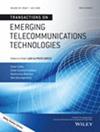A Deep Reinforcement Learning-Based Physical Layer Security Enhancement Design for RIS-Aided mmWave Communications With Practical Constraints
Abstract
Reconfigurable intelligent surfaces (RIS) offer new opportunities for enhancing security in millimeter-wave (mmWave) communications. However, some significant practical challenges still need to be addressed before their extensive implementation in future wireless networks. This article considers the practical constraints in a secure mmWave system aided by distributed RISs, including imperfect channel state information (CSI) in dynamic channel conditions and high complexity of non-convex optimization in complex environments. To address these challenges, we propose a robust and efficient physical layer security (PLS) enhancement algorithm based on the deep reinforcement learning (DRL) framework to effectively tackle the issues of limited dynamic adaptation and high computational complexity encountered with conventional optimization methods. This algorithm, utilizing an actor-critic architecture, can dynamically track channel variations and optimize strategies for improved system secrecy rate. Numerical simulations demonstrate that the proposed DRL-based PLS enhancement algorithm outperforms non-convex optimization benchmarks in robustness and efficiency for secure mmWave communication systems aided by distributed RISs and affected by imperfect CSI.

 求助内容:
求助内容: 应助结果提醒方式:
应助结果提醒方式:


